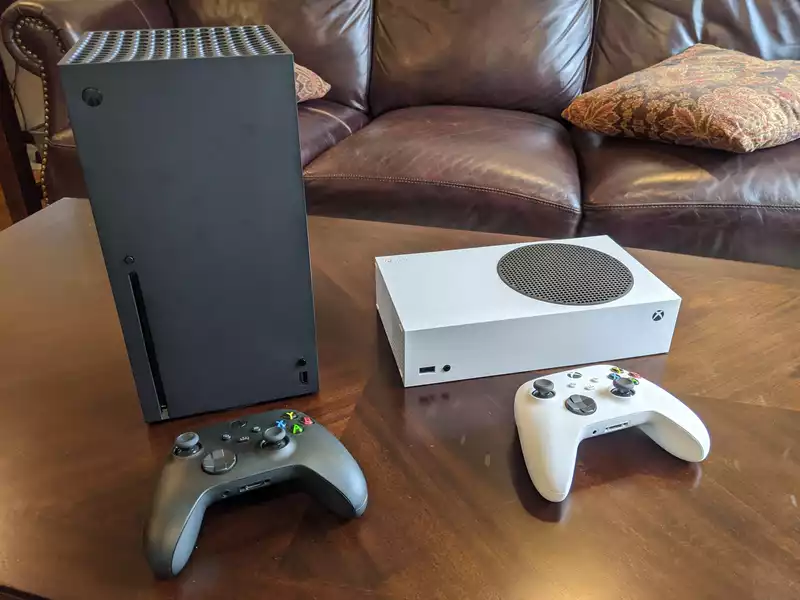The Xbox Series X and Xbox Series S are still a few weeks away, but photos and videos of the actual devices have been released: the Xbox Series X is a massive black device, while the Xbox Series S is a sleek and surprisingly small system. The controllers look almost identical to the previous Xbox One models, and both come with all the necessary cables to boot.
For now, we can only discuss the physical design of the console, so analysis of other important topics such as gameplay, interface, and streaming video will have to wait a bit longer. But if you want to know what's in the Xbox Series X and Xbox Series S boxes, what the game consoles will look like, and what kind of connectivity each will offer, read on.
It's been a long time since Microsoft first saw the Xbox Series X, so there are no big surprises here. The console is a large rectangular black box (12 x 6 x 6 inches) with a large circular vent at the top (which, as the marketing photos suggest, has really tasteful green highlights and looks pretty cool). Both sides are plain black with a matte finish, with the Xbox logo on one side and rubber feet for horizontal placement on the other. The bottom of the device also has one large circular rubber foot.
The front of the console has a power button, disk slot, disk eject button, pairing button, and USB-A port. The back has a small vent at the top and a larger vent at the bottom, two USB-A ports, a storage expansion slot, an HDMI port, an Ethernet port, and a power port. There is also a slot for a Kensington lock, a nice consideration for those who plan to travel with their devices.
Overall, the Xbox Series X is a gorgeous, minimalist gadget that looks like a small, squat tower PC. My only major complaint is the lack of a USB-C port. It's a handy feature now, but one that will be absolutely essential in the coming years.
We knew the Xbox Series S would be small, but when we saw it in person, it was much smaller than expected. At about 11 x 6 x 3 inches, it's about two-thirds the size of the Xbox One S, but much more powerful; while it doesn't have the powerful specs of the Xbox Series X, the Xbox Series S promises quad HD resolution and 120fps frame rates, at least for certain games.
The Xbox Series S also works in either portrait or landscape mode and has rubber feet on both the bottom and one side. There are vents everywhere, from a large black circle at the top, to two large ones on the sides, to one smaller one on the bottom.
The front of the device is almost empty, with only a pairing button, a USB-A port, and a power button; the back of the Xbox Series S has an Ethernet port, two USB-A slots, an HDMI port, a storage expansion slot, and a power port. Again, a USB-C input somewhere would have been advanced, but I can't think of anything else this system lacks.
There isn't much to say about the Xbox Series X/S controller. The Series X comes with a black one and the Series S comes with a white one. They are almost identical to the Xbox One controllers and come with replaceable AA batteries instead of rechargeable packs.
There are only two noticeable differences: the new share button is centered and the hybrid D-pad is surrounded by a circular track. We won't know about the share button until we try it, but the D-pad is comfortable and will be especially useful for fighting game players.
The Xbox Series X/S controllers also have light texturing on the back of the grip. Otherwise, however, it feels similar to the Xbox One controller in terms of weight, button response, and materials.
All I can say for now is that both systems look attractive and both are reasonably sized, especially compared to the huge PS5. I'll report back later on how the games, video, music, etc. work.
.









Comments